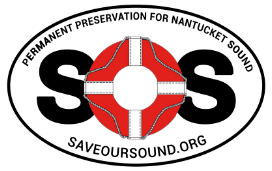Save Our Sound
From Habitat Degradation
The Cape and Islands are actively threatened by habitat loss and degradation. Septic systems have been a continued issue within Cape and Islands communities, and pesticides and fertilizers wash into the ground and waterways, impacting soil and water health. Salt marshes, dune systems, and floodplains are deteriorating due to coastal development. These naturally occurring systems and habitats help filter runoff, maintain surrounding water quality, and provide shelter for coastal animals.
Climate Change & Development
Cape and Islands’ waters are also suffering from habitat destruction due to climate change and development. Dredging and continued construction have caused damaging effects and a steady decline of eelgrass. Eelgrass on the Cape side of Nantucket Sound is found predominately in the nearshore waters from Monomoy west to Hyannis Port and the shore of Falmouth. Eelgrass systems are highly productive and extremely important biologically. They act as a refuge and nursery for juvenile fish and shellfish, many of which are commercially important, and support a diversity and abundance of marine life.
Eelgrass
Eelgrass provides a food source for a number of species and shelter for fish and shellfish. Eelgrass root systems provide stability against coastal erosion. Eelgrass traps sediment and helps to reduce the force of waves in the shallow coastal waters. It absorbs nutrients and carbon dioxide in the water, filters contaminants, and provides oxygen which helps improve water quality.
Today, eelgrass beds in the Sound are threatened by physical disturbances such as dredging, construction, shell fishing, propeller damage from boating, topsoil runoff, and pollution. The destruction of eelgrass habitats in the Sound make the health of this already fragile ecosystem even more tenuous.

